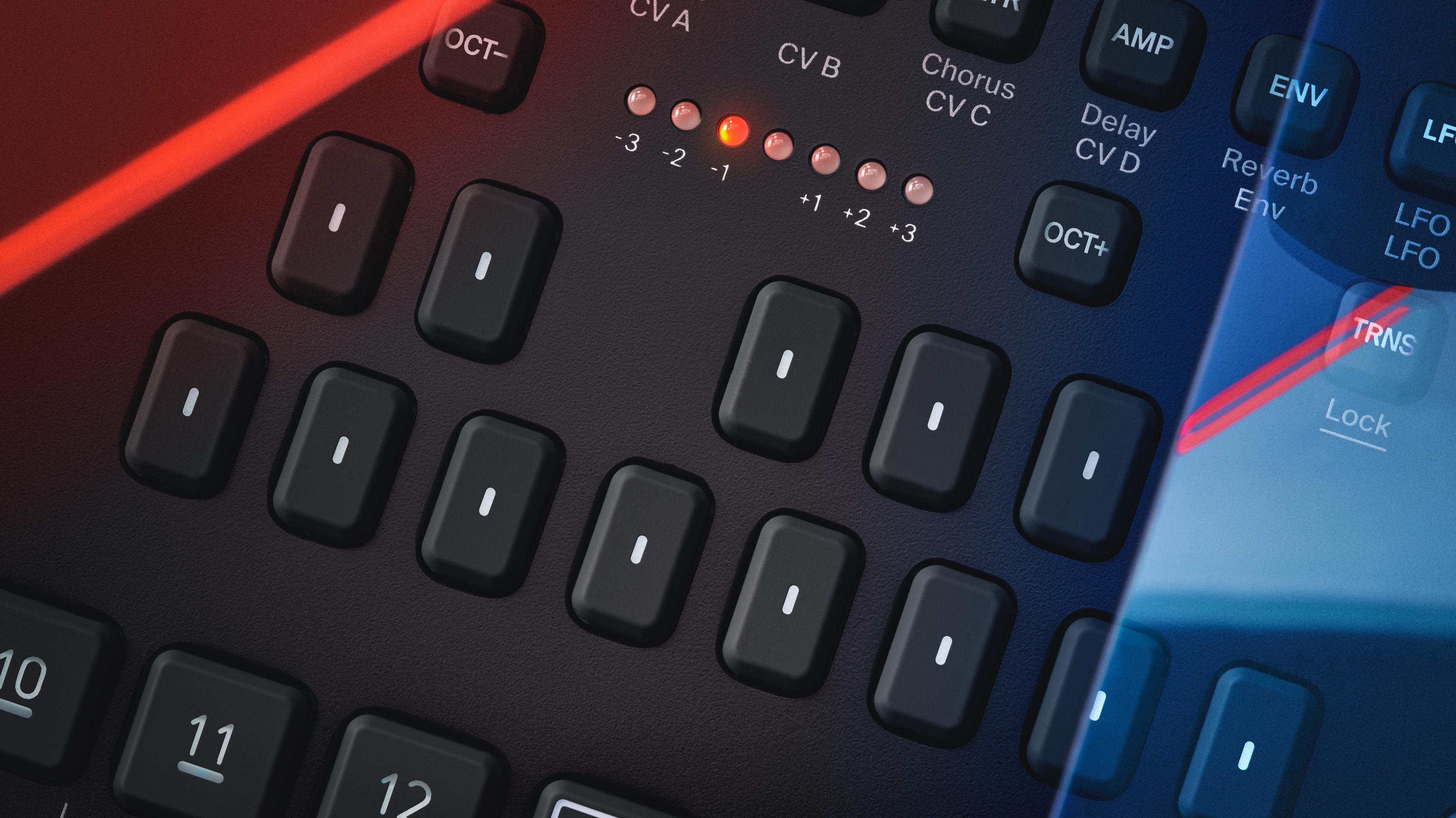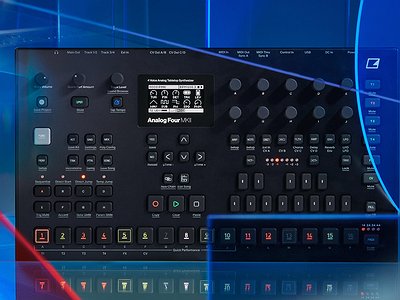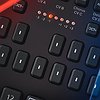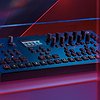Name: Harald Björk
Nationality: Swedish
Occupation: Producer, label founder at Kranglan Broadcast
Recent release: Harald Björk's remix of Sven Väth's "Being in Love" is out via Cocoon on August 18th 2023.
Tool of Creation: Elektron Analog Four
Type of Tool: Four voice polyphonic analog tabletop synthesizer
Designed by: Elektron
Years produced: 2012-
Country of origin: Sweden
If you enjoyed this interview with Harald Björk and would like to stay up to date with his music, visit him on Instagram, Facebook, twitter, and Soundcloud. We also recommend our earlier Harald Björk interview.
What was your first encounter with the Elektron Analog Four?
I had the Elektron Octatrack before it and it is still the centrepiece in my live rig. I was a part of the beta tester community and was looking for one piece that could do a lot of different and simultaneous electronic sounds.
And then Elektron announced Analog Four so I signed up as beta tester on that as well and got a good deal just when it was released.
Just like any other piece of equipment, the Elektron Analog Four has a rich history. Are you interested in it? And if so, what are some of the key points from this history for you personally?
I don’t know anything about the development of the product really, as in before it was launched. Elektron made a lot of well produced cinematic launch videos based on some dystopian story. Didn’t get in really.
I was looking for a great tool and was lucky to get one early to investigate it myself. It's quite straightforward, especially compared to the Octatrack … Even though much of the workflow descend from Elektron's earlier product lines it must have been a huge development process with the analog parts and the whole computer integration with “Overbridge” came with Analog Four.
What, to you, are some of the most interesting recordings made with the Elektron Analog Four?
In the beginning I used the Analog Four to create new songs that I could play live in my “only hardware” live setup using the very machines used producing the songs on stage in a compact setup.
One of my first tests that I recorded is this unreleased session that I played a lot live and in some Dublab Radio session in New York:
I was really happy to get that kind of organic living bell sound that morphs to a dissonant “rave chord”. Combined with an acidic bassline and some percussive sounds on a third track the sounds together made a quite complete minimalistic soundscape somehow. Not much more needed.
Fast forward 8 years and I was working on songs for a Cocoon release. I was lucky to capture a very melancholic moment with a lot of energy in the track “Medan Du Sov” where the Analog Four does the bass. It’s a quite complex cross modulated FM sound, distorted and filtered with the “Analog Four mki bass trick” adding depth in the bass through resonant filters.
It's a technique also used on the remix for Herr Väth.
What interests you about the Elektron Analog Four in terms of it contributing to your creative ideals?
It’s easy enough to get a grip of at first sight, to start playing around with the functions. But there’s always something to investigate which takes the experiment to the next level. A “what if I did this …” environment … and it is quirky, flaws always lead to something great.
Like the lack of sub bass in the construction of the filters. A lot of critics went on about that. In the end it inspired me to play with resonance creating subby sines and finding the sweet spots in the sound architecture. A wilderness!
What are some of the stand-out features from your point of view?
The multitimbrality, being able to play chords, bass lines, leads and percussion at the same time on an analog four voice synthesiser! That was what drew my attention to it. And then having two multi mode filters per voice! And dare I say, Elektron is still unbeaten in terms of the integration with their sequencers, at least unique!
Then the whole Overbridge integration with the computer environment. You can use it as a soundcard, get your synth voices in your DAW through USB, control it as a VST etc. You even got inputs for external gear …
Prior to using it for the first time, how did you acquaint yourself with the Elektron Analog Four? Will you usually consult a manual before starting to work with a new device – and what was that like for the Elektron Analog Four?
Internet communities and YouTube are always a great way to get the GAS going … I guess that was my prior use meeting with the Analog Four.
With Elektron I had a lot of direct contact with the developers being a beta tester and all, that is a very creative environment. When I have a new machine in my hands I first look and try. If I don’t get the basic functions I need I search for them in the manual (preferably pdf so you can actually search …). If I still don’t get it I turn to YouTube parallel with posting in some of the internet communities for music production.
I am a very active forum hog, posting questions and sharing ideas … electronic music is a lot about the community to me.
Tell me a bit about the interface of the Elektron Analog Four – what does playing it feel like, what do you enjoy about it, compared to some of your other instruments?
It’s actually pretty horrible to play the small “key buttons” but they’re great for sequencing. There is a key version of it for players … The sequencer is basically: hold a step and press desired keys and turn knobs and everything is stored on to that step. And all the extra features like probability and divisions, individual resolution and length per track etc. Incredible!
Elektron Analog Four Interview Image (c) Elektron
The knobs are endless rotary encoders - of course multifunctional with all the parameters under the hood. Not the first choice of preference. But they are rubber coated which is quite nice and there’s also a performance mode where your set of knobs can control parameters on different voices and even multiple parameters from the same knob. It’s very handy live.
How would you describe the sonic potential of the Elektron Analog Four?
I’ve done a lot with it! Aggressive screaming baselines, bells, pads, all sorts of percussion, acid bassline lines. It might have a slight silky DCO vibe to it that makes it sound a little “dry”. It doesn’t have that heavy vintage VCO sound.
Aggressive critics might say that it sounds like someone put a wet towel over the sound … but those words are also used for gems like the Polysix and the SH101 so …
In which way does the Elektron Analog Four influence musical results and what kind of compositions does it encourage / foster?
It is sequencer oriented so it’s good for repetitive music like the type of electronic music I use it for. You can get “enough variation” with the probability functions, different resolutions of steps and tracks and modulation sources like LFOs and envelopes. With some techniques you can make quite long and complex sequences. Modulation is also good to make sounds drift which is quite common in my music and great to catch the feeling of uncertainty and melancholy. 
Elektron Analog Four Interview Image (c) Elektron
When I think of it I tend to make sounds that drift and morph out of tune with all the LFOs, vibratos and possibilities to make the oscillators affect each other. But it’s good for a lot.
Could you describe working with the Elektron Analog Four on the basis of a piece, live performance or album that's particularly dear to you, please?
Working on the remix for Sven Väth I already had two rhythmic bass lines interacting in different timbres through the intro and first half of the track. After a while I felt like I wanted to “lift” the track with a break and bring new fuel and a lot of energy.
This is where I brought in the Analog Four. In the remix it enters like a constant tone energy with all that bottom and depth and with a lot of filtered overtones. It’s very big in the soundscape, like when you snorkel on a reef and exit the shallow water for the depth of the ocean. You can hear the potential of all overtones but the filter keeps the roar dampened like the purr of a giant cat.
It’s a sound I love to tweak live. You have the high pass filter, the lowpass filter and all that rich sound to let through and dampen at your fingertips…
How does the Elektron Analog Four interact with some of the other tools in your studio?
I’ve used it for CV/Gate sequencing of other synths. And nowadays it also features midi sequencing of other gear which wasn’t possible for a long time. I have used it as a stereo filter for some instruments.
In one setup I routed my whole master signal through the analog filters of the Analog Rhythm, so up for creativity really!
Are there other artists working with the Elektron Analog Four whose work you find inspiring? What do you appreciate about their take on it?
I know a lot of people who have been using it and have it in their setups so it is probably used in a lot of music I appreciate. Remember Luke Abbott having a fun approach to it and using the MKii. He used the resonant filters and cross modulation for chaotic interaction between voices in drones, pads and morphing arpeggios. Things I hadn’t thought of and haven’t tried yet.
There is also a Japanese sound designer called Kimura Taro working a lot with percussive sounds inspired by classic Japanese drums that blow my mind a bit. There is still a lot to experiment with and investigate! And now a days the mkI’s are sold way to cheap!






